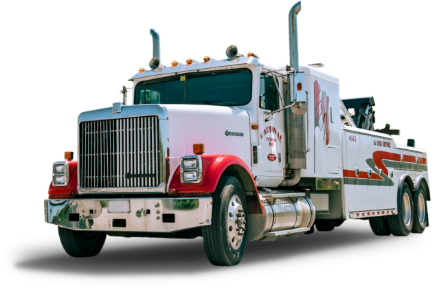An overheating engine isn’t just an inconvenience. It’s a serious problem that can lead to catastrophic damage if not handled properly. Unfortunately, most drivers either ignore the warning signs or make hasty decisions that end up costing them thousands of dollars in repairs. In fact, according to CAA Canada, overheating-related breakdowns are one of the top five roadside emergencies across the country — and many could be avoided with the right steps.
As a towing specialist who’s seen engines crack, radiators burst, and drivers stranded in the worst situations, I’m here to help you handle this situation calmly and safely. In this article, I’ll explain why your car overheats, what steps you should take in the moment, how to prevent further damage, and when you absolutely need to call for professional towing with Cardinal Towing.
1. Why Your Car Overheats in the First Place
There are several reasons your car’s engine might overheat, and understanding the root cause can help you respond effectively. The most common culprit is low coolant levels or a coolant leak. Your engine relies on coolant to regulate temperature, and without enough fluid circulating through the system, heat builds up rapidly.
Another common cause is a failing thermostat. This small component controls the flow of coolant, and if it gets stuck closed, the coolant can’t circulate properly. A broken water pump, clogged radiator, or a damaged radiator fan can also cause your engine to run too hot. In some cases, especially during long highway drives or heavy stop-and-go traffic in the summer heat, even a well-maintained vehicle can overheat if airflow to the radiator is obstructed.
2. The First Steps You Need to Take — Without Panicking
The moment you notice your temperature gauge climbing toward the red zone or see steam coming from under the hood, stay calm and act quickly but safely. First, turn off your air conditioning to reduce the strain on the engine. Then, if it’s safe, turn on your heater full blast. This might sound strange, but it helps pull heat away from the engine and can lower the temperature temporarily.
Next, look for a safe place to pull over. Don’t stop abruptly in traffic or on a narrow shoulder. Instead, find a wide, safe area where you can park and turn off the engine. Once the engine is off, do not pop the hood right away — it could cause serious burns. Wait at least 10–15 minutes for the engine to cool down before checking anything under the hood.
I once helped a driver on the 401 near Toronto who pulled over right away but made the mistake of opening the hood immediately. The rush of cool air caused the radiator cap to burst off, spraying scalding coolant everywhere. Patience and caution are key.
3. What You Can Check and What You Should Leave Alone
After the engine has cooled, carefully open the hood. Check the coolant reservoir — if it’s empty, you likely have a leak. If you have coolant in your vehicle and know how to safely top it up, you can add it to the reservoir. But here’s the catch: if the radiator itself is leaking or the problem is mechanical, adding coolant won’t solve anything.
Be cautious. If you see puddles of coolant under your car, or if the coolant reservoir was completely dry, driving further could cause severe engine damage. If the coolant level seems fine, the problem may be a broken thermostat, water pump, or radiator fan. In this case, it’s best not to drive at all.
Some drivers try to “nurse” their vehicle to the nearest garage after topping off coolant, only to cause irreversible engine damage. Remember, overheating can warp your cylinder head, crack your engine block, and leave you with a repair bill that easily exceeds $4,000. If there’s any doubt, call for a tow.
4. When to Drive and When to Call Cardinal Towing
So how do you know if it’s safe to keep driving? If the temperature drops back to normal after cooling and topping up coolant — and if there are no visible leaks or strange noises — you may cautiously drive to the nearest mechanic. But only do this if the shop is less than a few kilometers away.
However, if the temperature gauge rises again, the car won’t stop steaming, you notice fluid leaks, or the engine is making knocking sounds, do not risk it. Driving even a short distance with these signs can completely destroy your engine. I’ve towed vehicles from situations where drivers tried to push just a little farther and ended up with smoking engines and seized pistons.
If you’re unsure or feeling anxious about what to do, err on the side of caution. Call Cardinal Towing. We’re not just here to tow — we’re here to keep you safe and protect your vehicle from expensive, irreversible damage.
5. How to Prevent Overheating in the Future
No one wants to deal with an overheating car twice. The good news? With proper maintenance, you can significantly reduce the risk. Regularly check your coolant levels, especially before long road trips or during extreme weather changes. Get your radiator, water pump, and thermostat inspected during routine service intervals.
If your vehicle has over 100,000 kilometres on the odometer, have your cooling system flushed and refilled according to the manufacturer’s recommendations. Dirty coolant loses its effectiveness and can cause clogs or corrosion in the system. Also, pay attention to small signs: a slightly higher running temperature or occasional coolant smell could indicate small issues waiting to become big ones.
Conclusion
Overheating is one of those vehicle problems that can escalate from minor inconvenience to full-blown disaster in minutes. While there are things you can do to help in the moment — like turning on your heater, topping up coolant, and pulling over safely — sometimes, the only smart move is to stop driving and call for help.
At Cardinal Towing, we’ve rescued countless drivers from overheating situations across Canada, and we know exactly how stressful these moments can be. Don’t gamble with your engine’s health or your safety. If you’re facing an overheating issue and aren’t sure if it’s safe to continue, call Cardinal Towing for a fast, professional tow to a trusted repair shop.
Get a quick, no-obligation quote from Cardinal Towing now — and let us help you protect your car and your wallet from costly damage. We’ve got your back 24/7.



